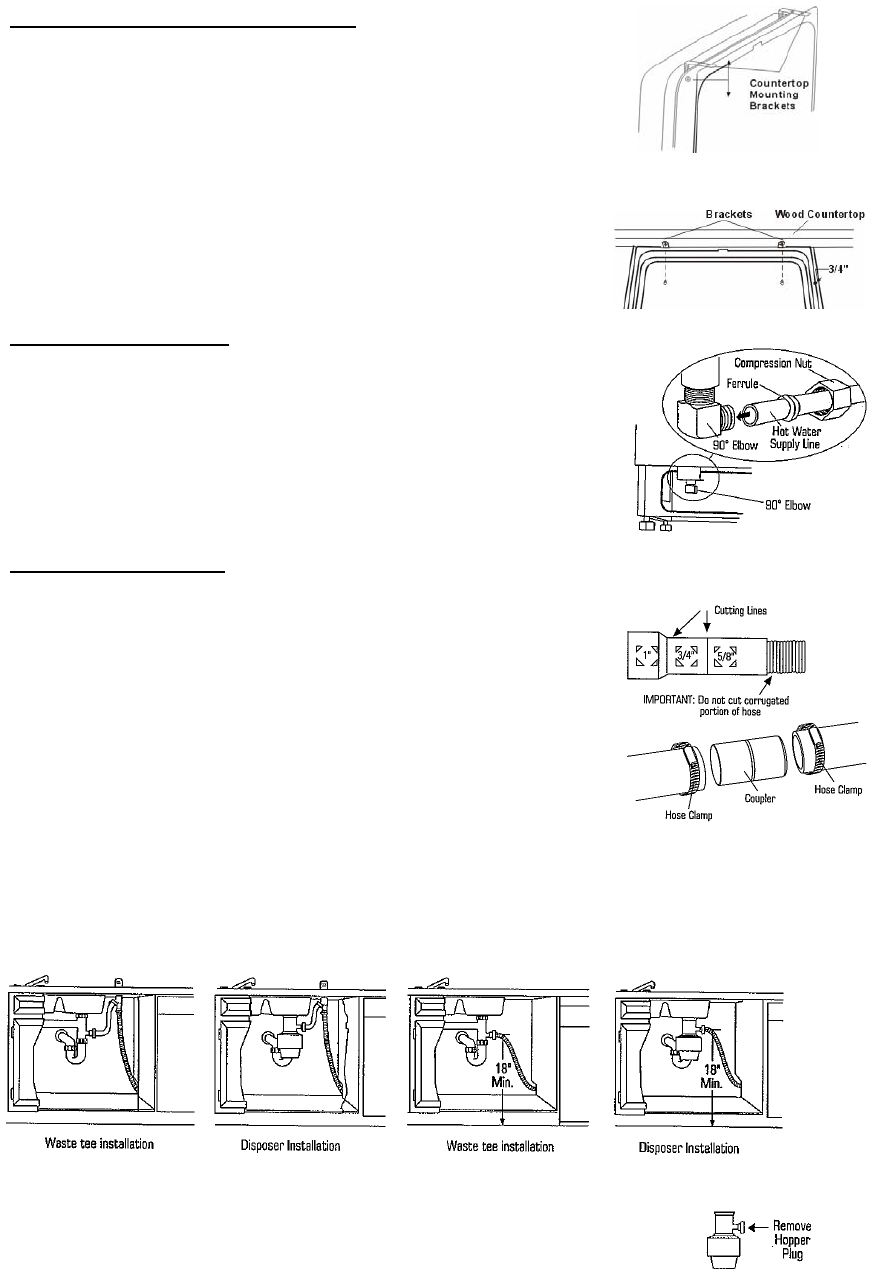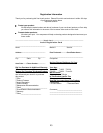
9
¾ Push Dishwasher Into Final Position
The dishwasher must be secured to the countertop or the cabinet sides.
• Check to be sure that wires are secured under the dishwasher and
not pinched or in contact with door springs or other dishwasher
components.
TIP: Check tub insulation blanket. It should be positioned so it is not
bunched up or interfering with door springs. Check by opening and
closing door.
• Push dishwasher into the cabinet. The front corners of
dishwasher door should be flush with cabinet doors. Be careful
not to dent front panel with knees or damage countertop or
cabinets with dishwasher parts.
• Fasten the dishwasher with the 2 Philips screws provided.
¾ Connect Water Supply
Connect water supply line to 90º elbow.
• Slide compression nut, then ferrule over end of water line.
• Insert water line into 90º elbow.
• Slide ferrule against elbow and secure with compression nut.
IMPORTANT: Check to be sure that door spring does not rub or
contact the fill hose or water supply line. Test by opening and closing
the door. Re-route the lines if necessary.
¾ Drain Line Installation
Follow All Local Codes And Ordinances
The drain hose molded end will fit 5/8”, ¾” or 1” diameter connections on
the air gap, waste tee or disposer. Cut on the marked line as required for
your installation.
• If a longer drain hose is required, add up to 42” of length for a total
of 10ft. length to the factory installed hose. Use 5/8” or 7/8” inside
diameter hose and a coupler to connect the two hose ends. Secure
the connection with hose clamps.
• Secure the drain hose to the air gap, waste tee or disposer with
clamps.
NOTE: Total drain hose length must not exceed 10 feet for proper drain operation.
• Connect drain line into air gap, waste tee or disposer using either previously determined method.
IMPORTANT: When connecting drain line to disposer, check to be sure that
drain plug has been removed. DISHWASHER WILL NOT DRAIN IF PLUG IS
LEFT IN PLACE.
WARNING
The plumbing installation shown below must be performed by a
qualified and licensed plumber, following all of the electrical codes
and ordinances required by the State.


















